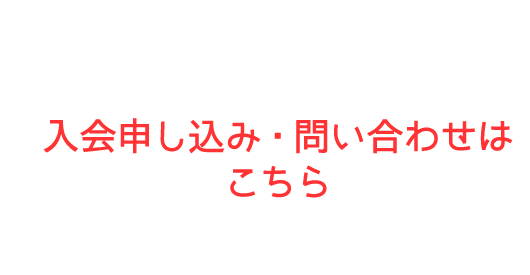いま伝えたい――丹土 美代子さん
たんど みよこ ・ 13歳の時に広島で被ばく
| ・音声で聞く (Youtube) |
・文章のダウンロード (日本語・PDF) |
・英文のダウンロード (English・PDF) |
原爆は国際法違反の兵器、みんなに知ってもらいたい
/ 核兵器なくそう女性のつどいで被爆証言(2005年・広島)
1945年、広島市立高等女学校に入学して4ヵ月あまりの 8月5日から、広島市がおこなった建物疎開作業に動員されて、加古町に行きました。翌6日は、タンスを田舎に運ぶ父の手伝いのため、作業を休みました。原爆が投下された時は、爆心地から1.2km の舟入中町の自宅の2階で窓を開けて外を見た時、突然 ピカッと青白い閃光が走り、私は思わず手を覆いましたが、 一瞬、熱線で体は焼かれていました。何も見えなくなり、右の足だけが外に出ている格好で、家の下敷きになっていました。父が助け出してくれましたが、 膝下に深い傷を負っていました。 1階にいた祖母は即死。外で遊んでいた弟は行方不明なままです。父と妹と私の3人で 南観音の方に避難しました。逃げる途中、喉が渇くので水を飲むとすぐに黄色い水のようなものを吐きました。
また激しい黒い雨に遭い、びしょぬれになって、寒気がするので、自宅から衣類を拾ってきて、着せてもらいました。避難先の三菱造船の社宅では、治療らしきことは何もなく ぐったりしていました。3日目の8月8日の朝、妹が死亡し、夕方になると、父の容態が悪化して治療を受けることもなく亡くなりました。
私は1人になって心細く、迎えに来てくれる人を待っていました。配られるおにぎりは食べにくいので、水っぽいお粥のようなものを食べていました。
5日目に叔父が私を探し当ててくれ、大八車に乗せられて、廿日市の国民学校に行き、数日後、そこから佐伯郡原村の国民学校に移りました。脱毛や下痢、発熱などの症状がどの程度だったか、自分には記憶はありません。周りの人たちは、私が生き延びることは無理と思っていたようです。
2歳の弟を連れて疎開していた母親が、火傷の治療にはどくだみ草を煎じて飲ませてくれ、傷口には油とシッカロールを練り合わせたものをつけてくれるなど、必死で看病をしてくれた甲斐があって、その年の12月頃には火傷は良くなりました。家は焼かれ、大黒柱の父を失った戦後の生活は、勉学を続けるわけにはいかず、復学を断念して働くことにしました。
看護婦を2年しましたが、体力的に無理がきかず、旧国鉄の物資部に転職しました。政府は原爆被害者を長年放置してきました。被爆者に対する世間の理不尽な偏見は、結婚、 就職、あらゆる面で厳しい 差別があり、苦労しました。1975年頃、体調を崩して病院に行くと慢性肝炎と診断されました。1980年に結婚、 夫の理解と援助があったので、頑張って働き続けましたが、 51歳の時に仕事をやめました。
10年前にC型慢性肝炎と診断されました。私は輸血の経験もありませんので、不思議でした。C型慢性肝炎は、厚生労働省の認める原爆の11の疾病に該当しないといって、、健康管理手当も支給されません。ただし、2キロ以内で被爆しているので、保険手当はもらっています。私は被爆したことで免疫力が低下したために、肝炎を発症したことを政府に認めさせたいという思いで、認定申請をしました。しかし 2002年12月、厚生労働省は却下通知をしてきました。私が原爆症認定集団訴訟の原告になったのは、自分一人のことではありません。原爆が国際法違反の兵器であることをみんなに知ってもらいたい。さらにあの日、建物疎開作業に行って全滅した、学友への気持ちも含めて、再び被爆者をつくらせないことを強く願うからです。
【英訳/English】
A Final Struggle as a Hibakusha
Miyoko Tando
I was exposed to the Atomic Bomb when I was thirteen, a first year student of Hiroshima Municipal Girls’ High School. On the previous day, the fifth of August, I was mobilized to demolish the buildings in Kako-machi, 700 meters from the hypocenter. The next day, the sixth of August, I didn’t go to work. I was supposed to help my father move our closet in the suburbs. When I opened the windows of the upper floor of our house and looked outside, a sharp bluish flash spread over everything, and I unconsciously covered my face with my hands.
Nothing was visible. I was trapped under the house. Only my right leg was not trapped in the debris, and I was seriously injured below my knee. My father managed to pull me out. But both my grandmother, who was on the ground floor, and my little brother, who was at play outside, were missing.
My father, my sister and I fled into Mitsubishi Shipyard Building in Minamikan-on. On the way I became so thirsty that I drank water, and soon afterward I vomitted some thing yellowish. Then I was drenched with ‘black rain’ and felt cold. I was covered with cloth that someone brought from nearby.
The three of us were just lying in the shelter (the shipyard building) without being treated with anything or by anybody on that day and the following day. On the morning of the third day, the eighth of August, my sister died, and in the evening of the same day my father’s condition became very bad. All I could do was just watch him pass away without any treatment.
I could only eat things that were weak like rice porridge. On the fifth day, the tenth of August, my uncle found me and took me back on a two wheeled car to his house in Hatsukaichi, about 20 km west of Hiroshima City. I was seriously burned. My mother, who had been away from the city on the day that the bomb was dropped, took me to Hatsukaichi Elementary School, which had become one of the first-aid stations. But there she saw people dying one after another, so she moved me to another station in Hara. She took very intense care of me, but people around us thought it was hopeless to think that I would survive. I don’t remember how sick I was, how the loss of toy fair or diarrhea or fever affected me. All I got for my burns were decocted ‘dokkudami kind of medicinal herb) and something with oil and ‘sikkaroru’ that was put on the burned parts, In December of the same year (1945) the burned parts of my body tegu to heal, but I felt I had lost my stamina or desire to live, I survived because I was absent from the demolishing work on that day while most of my classmates were killed at the demolishing site. I agonized over this fact for a long time.
Anyway, we lost our father, who was the family’s bread winner, so I had to en school and got a job. For a hibakusha’ it wasn’t easy to get a job or even to married. After two years’ work as a nurse, I was employed at a company store of the former National Railway, In 1975 1 suddenly lost my health. I was diagnosed as having chronic hepatitis, However, I continued working at my job, but I had to quit it at the of 51.
On the ninth of July, 2002, a collective application for acknowledgement of the A bomb disease (radiation sickness) was started by many hibakushas all over the nation. I decided to risk participating in it.
Ten years ago (1995) I was diagnosed as having chronic C-type hepatitis, but I did get Health Maintenance Allowance. I receive only Health Care Allowance, which i given to anyone who was within two kilometers of the hypocenter. I had previously abandoned hope that my application for acknowledgement would be successful be cause I knew that the Ministry of Health, Welfare and Labor would reject my application only as is their usual policy.
This time in 2002 the Counsel Center tried very hard to get doctors to write certificates for me. The support of these people around me made me decide to submit an application again. I also came to see the importance of have a sincere communication with doctors.
All I wanted was to make them (the government officials) acknowledge that I hat hepatitis because I had been exposed to the atomic bomb and that this had resulted is the decline of my immune system. When my application was accepted at the local Ministry office desk, I almost cried.
But in December of the same year (2002), the national office of the Ministry of Heal Labour and Welfare rejected it. In response, we lodged an objection. The mass med then took up our case, giving it broad publicity. This encouraged other hibakusha who had almost given up on their application for acknowledgement. As a result, inquiries to Hidankyo and the Counsel Center began to increase.
We need a broader support system for this collective application. We are asking not only peace supporters but also doctors, lawyers, social movement groups, youth, women’s groups, individuals, and many more to assist and support us.
We strongly believe that there should never be any future atomic bomb victims. On June 12, 2003, 1 filed a lawsuit in Hiroshima District Court with 27 other accusers. Little time is left for aged hibakushas, For me this will be the final struggle of my entire life, after 58 years of suffering.
(from vol. 37: 2003)

.png)



